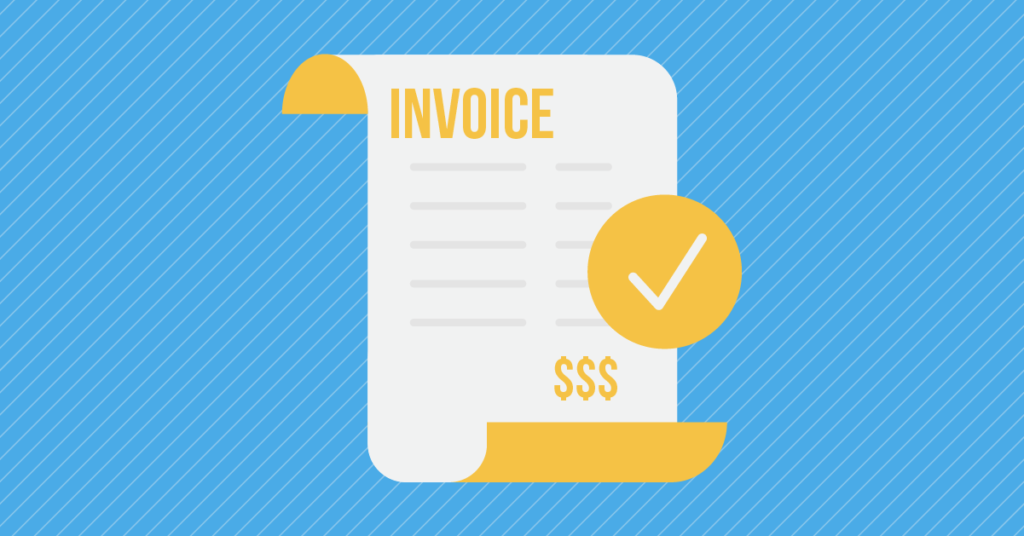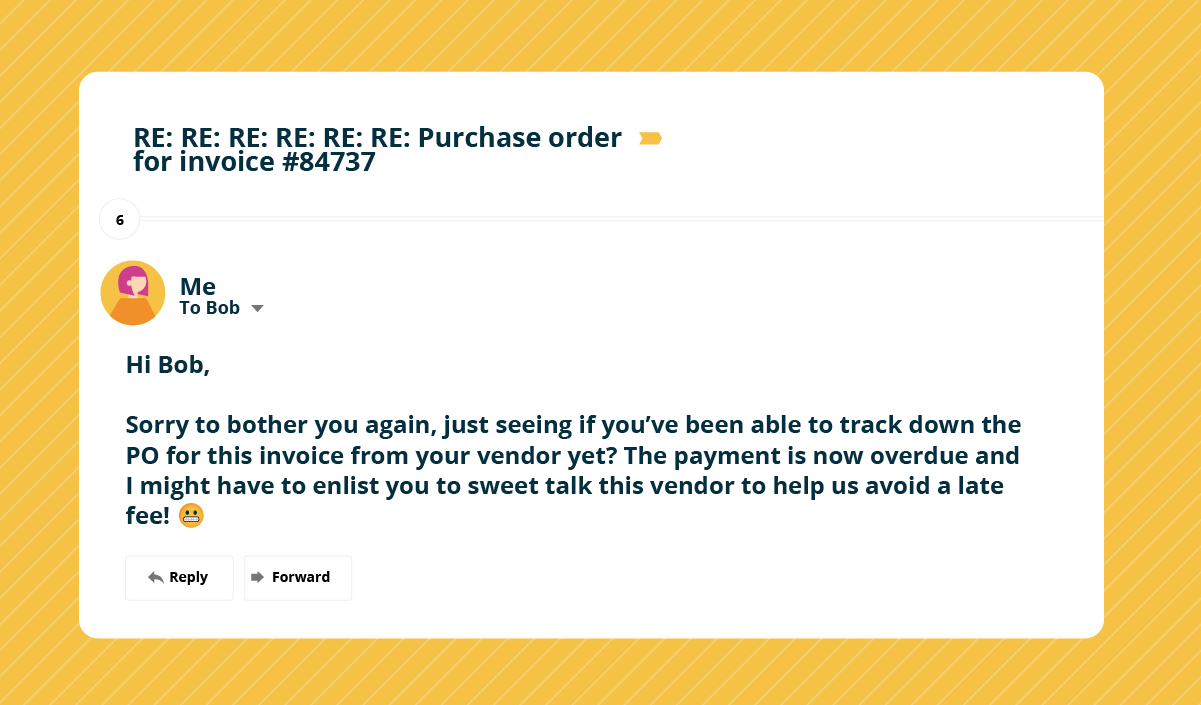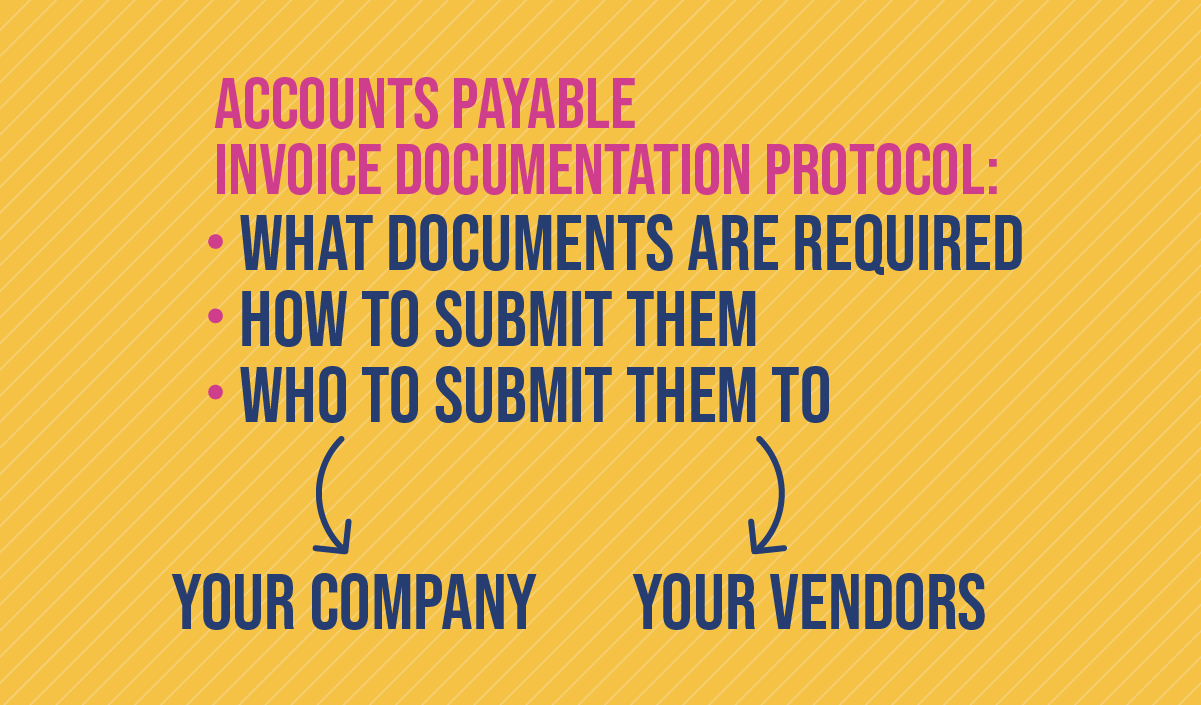How to Process Invoices with Supporting Documents via AP Automation

It’s a pain for the vendors, who have to ‘jump through all sorts of hoops’ just to get paid. It’s a pain for the rank-and-file employee who doesn’t want to fuss over lots of financial details that have very little to do with their actual responsibilities at work. And as you are likely well aware, it’s a pain for the accounts payable staff to chase down all the supporting invoice documents, verify it, and double check the math.
So why are supporting invoice documents often a requirement?
Well, to point out the obvious, invoice fraud is a huge concern. Remember the Lithuanian man who robbed Facebook and Google to the tune of $100 million with a scam largely dependent on fraudulent invoices? Yikes.
Imagine the sheer horror of the Controller that realized their department has authorized millions in payments for things that never should have been processed. And if this type of fraud is happening at Google and Facebook—with the massive amount of resources they have—you can bet it’s happening at the mid-market level as well.
The second reason supporting invoice documents is critical to the overall process is that accounts payable departments are typically separated from the service delivery arm of the business. Literally separated—sometimes they’re not even in the same building.
How can an accounts payable staff member be expected to know the legitimacy of an invoice without some context in the form of supplementary invoice documents?
For this reason, businesses add internal controls in place so fraudulent invoices aren’t paid. These controls come in form of supporting invoice documents.
But, contrary to popular belief, it doesn’t have to be such a pain. In fact, when executed properly, AP departments can use supporting invoice documents to reduce the risk of fraud, streamline their internal workflows, and improve relationships with vendors.
In this post, we’ll break down some common types of supporting invoice documents, best practices for formalizing the process and give advice on how to supercharge the whole system with AP automation.
Let’s get started.
Types of Supporting Invoice Documents
So what’s needed to verify an invoice?
The required supporting documentation is different at every company and industry. For example, some industries require that every transaction begins with a Purchase Order (PO). Regardless, most accounts payable departments do require some sort of supporting documents in order to start the invoice verification and approval processes.
Here is a list of supporting documents that frequently accompany a vendor and their invoice:
- Purchase Order (PO): Internal purchase orders need to match invoices from external sources. AP 101.
- Receiving Document: Document included with the goods when they are received. Sometimes referred to as a packing slip.
- The Advance Shipping Notice (ASN): Sometimes a notification letter is sent for a pending delivery and is a good first indicator that what you’re about to receive isn’t going to match what’s on the PO.
- Terms and Conditions: These can provide legal cover for the vendor and/or company. These are often ‘default’ terms AP falls back on for when POs are incomplete.
- Delivery details: For unusual or complicated projects, you might find a further explanation on the terms and timelines of delivery.
- Contracts: Signed or unsigned, it’s not uncommon for invoices to be accompanied by a contract. Changes to the contract may incur charges to the invoice total.
- Timesheets: For projects billed hourly, some companies may need documentation and additional details for the actual hours being billed for.
- Proposals: This document will provide significantly more detail into the project itself that what would appear on an invoice.
- Translations: If you’re working with a foreign vendor, many companies will require a translation of the invoice in their native language before processing.
- W-9s: Keep track of your independent contractors and vendors with their tax ID numbers. This protects businesses from paying illegal vendors and possible implications due to fraudulent activity conducted by a vendor.
Do any of these look familiar? They should, as you’re likely using one or many of these in your own invoice management system. Depending on how well-defined your system is, the documentation may come in a variety of different file types, from hard copies in the mail to email attachments to app-based digital files.
Once you know what types of documentation you need to start processing the question becomes: How can you streamline this workflow?
Straightening Out your Supporting Invoice Documents Process
While supporting invoice documents is a crucial part of the AP process, it can also be maddening—both from the AP side and the vendor side. Especially if it’s being done manually.
On the AP side, you’re literally scrambling around from department to department trying to get the necessary documentation. This creates seemingly endless email threads and potentially lots of unnecessary tension between departments and employees, not to mention adding to the overall cost of processing each invoice.

The vendor side can be tricky as well. Imagine you’re just trying to get paid for work you honestly delivered and you’re being contacted by three different people asking for documentation you don’t even have… It’s unpleasant, to say the least.
The solution is a two-pronged approach that originates in the accounts payable department and goes out to the rest of your company, and also your vendors. It’s incredibly simple:
You need to lay out your specific documentation, processes, and requirements upfront. Whether that’s a memo, a meeting, or *cough* a digital platform, you need some permanent documentation for your, well, supporting invoice documents.

Once that’s clear, you can roll it out to your coworkers and vendors. Depending on how your company operates, it may be the AP department interacting with the vendors directly, or you’ll have to allow your other departments to deliver the message on your behalf.
Everybody needs to know, at a minimum:
- What supporting documentation is required
- What is the verification and approval process
- Where will the supporting documents be stored
Having clarity on these few simple issues around supporting invoice documents can really save you a lot of time and effort. If you want to up the ante a bit and really make significant gains in your operational efficiency and excellence, you might want to consider adding an AP automation platform into the mix.
Here’s how it works.
How to Level Up Invoice Processing with AP Automation
In order to make your AP processes truly effortless, you need to be able to efficiently get through all the documentation requirements. It’s a lot of steps, and more so if you have a long list of documentation requirements.
Here’s how AP automation can make this whole process much easier and more accurate.
Step 1 – Digitize
The first part of any AP automation process is to digitize all documents. Many vendors are already sending digital invoices in PDF format and related ‘paperwork,’ and any who aren’t will require you to scan them into your computer.
Now, all your documents are now in one central, digital repository that can easily be searched, but that’s not all.
Step 2 – Capture invoices using AI
Advanced OCR technologies will read all your invoices (and their corresponding documentation) and extract the data from the defined fields or GL codes. Because the system is intelligent, it will match up the GL codes listed with standard formats (dates, dollars, etc.) without requiring a human to manually enter the data. Moreover, the intelligent system can also work with custom fields.
Step 3 – Verification and code
The system can then match invoice data with corresponding documents such as purchase orders pulled from an accounting system and code them in correspondence with your general ledger.
Step 4 – Configure rules-based workflows
Once the system has a verified invoice in its grasp, there is a whole world of possibilities available by configuring pre-set rules based on your organization’s workflows, in addition to the system learning your processes. You can:
- Automatically assign multiple approvers (and in the correct order) if an invoice reaches a defined dollar threshold
- Require an additional approver if AP changes invoice data depending on your defined requirements
- Delegate a user to approve invoices, answer or ask questions, or make field updates
With Stampli, the intelligent system is powered by an artificial intelligence helper, Billy the Bot. Billy auto-populates fields and as more invoices are processed in Stampli, Billy learns to match your specific invoice processes. Billy the Bot also learns and streamlines the process of assigning invoice owners in addition to filling out custom fields.
Step 5 – Archive for audit
With the job complete, securely store all of your documents in a digital archive for safekeeping which are also searchable if needed for reference later.
Next Steps
What’s described above is the basic process for wrangling your supporting invoice documents into better workflows, but it’s only the tip of the iceberg in terms of what’s possible with Stampli. Our AP automation platform features top of the line usability, security, and even artificial intelligence (Billy the Bot) to enable your system to become completely customized to the way your company does business.
But unlike other accounts payable software, Stampli is unique in that implementation can be accomplished in days. Not sure where to start? Check out all the details of our AP automation platform and see for yourself.

